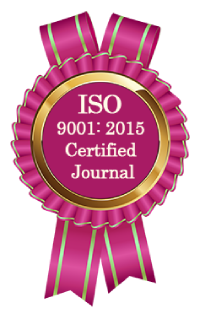
World Journal of Pharmacy and
Pharmaceutical Sciences
( An ISO 9001:2015 Certified International Journal )
An International Peer Reviewed Journal for Pharmaceutical and Medical Research and Technology





 |
|||||||||||||
|
| All | Since 2020 | |
| Citation | 6651 | 4087 |
| h-index | 26 | 21 |
| i10-index | 174 | 83 |
 Search
Search News & Updation
News & Updation
COMPARATIVE PHARMACOGNOSTICAL STUDY OF WILD AND CULTIVATED VARIETIES OF AMALAKI (PHYLLANTHUS EMBLICA LINN.)
Dr. Jyoti Bhagiya*, Dr. Dilip Jani, Dr. Dharmendra Jani, Dr. Amit Gohil and Dr. Suman Singh
ABSTRACT Background: Amalaki (Phyllanthus emblica Linn.) fruit is highlynutritive with a great medicinal use and the richest source of VitaminC. The growing popularity for Ayurveda medicine, health foods andherbal products are enhancing the need of Amalaki fruit. Based onDesha Bheda (Habitat) described in Ayurveda classics, there are twotypes of Amalaki (Phyllanthus emblica Linn.) are available viz.,Gramya (Cultivated) and Vanya (Wild). Cultivated variety is usedmore often because it offers gain to the manufacturers in terms of theamount of pulp available. To assess the difference between wild andcultivated variety through macroscopic, microscopic and powdermicroscopy this study was carried out. Methods: Matured fruits offour varieties (Wild Amalaki, Gujarat Anand- 2, Narendra Aonla-5 andNarendra Aonla-7) were collected, authenticated and morphological,macroscopic and microscopic characters were documented. Observation and Result: Fruit of wild variety is smaller and strong astringent thancultivated. WA and NA-7 varieties shows thick cuticle while GA-2 and NA-5 varieties showsthin cuticle. WA, GA-2 and NA-5 varieties shows 2-4 layered cells of hypodermis while NA-7 variety shows single layered cell of hypodermis. GA-2, NA-5 and NA-7 varieties showslarger engage area of mesocarp as compared to WA. Parenchymatous cells are thick walled inWA as compared to GA-2, NA-5 and NA-7 varieties. Conclusion: Fruit of all varieties differsin size. Transverse section of all the four varieties shows same cellular structures with somedifferentiating characters. Keywords: Ayurveda, Amalaki, Varieties, Cultivation, Phyllanthus emblica Linn. [Download Article] [Download Certifiate] |
